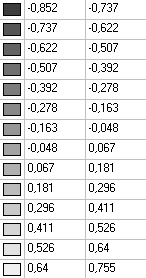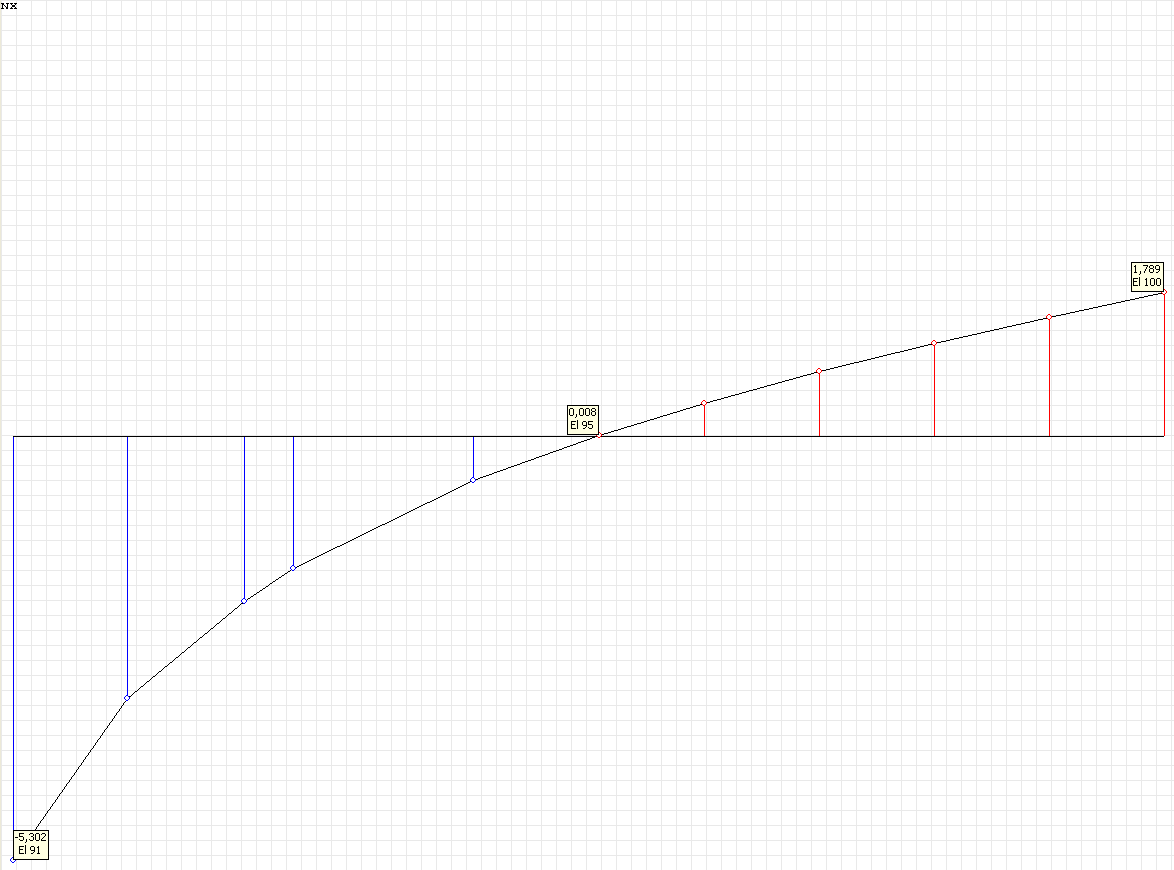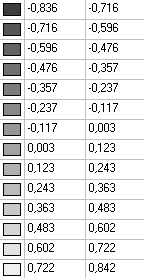Bending of a Curved Beam of a Narrow Rectangular Cross-Section by a Force Applied to Its Free End (Golovin’s Problem)
Objective: Determination of the stress state of a curved beam of a narrow rectangular cross-section subjected to bending by a concentrated force applied to its free end.
Initial data file: 4_21.spr
Problem formulation: A force P acting parallel to the edge in the plane of the circular axis of the beam is applied to the free end of the cantilever curved beam of the unit thickness. Determine the stress tensor components in polar coordinates σrr, σθθ, σrθ for the beam cross-section at θ = 90º to the edge of the free end of the beam (section n-n).
References: S.P. Demidov, Theory of Elasticity. — Moscow: High school, 1979.
Initial data:
| E = 3.0·107 kPa | - elastic modulus; |
| μ = 0.2 | - Poisson’s ratio; |
| h = 1.0 м | - thickness of the beam; |
| r1 = 5 м | - inner radius of the beam; |
| r2 = 15 м | - outer radius of the beam; |
| P = 5.0 кН | - concentrated force bending the beam (horizontal). |
Constraints: full restraint of the nodes of the clamped edge of the beam (section m-m)
Finite element model: Design model – general type system, beam elements – 300 eight-node elements of type 50. The spacing of the finite element mesh in the radial direction is 1.0 m, and in the tangential direction is 9º. The direction of the output of internal forces is radial tangential. Since the boundary conditions at the end surface of the free end of the curved beam (θ = 0º) are given in integral form in the analytical solution, they are softened by introducing a rigid body (member type – 100), the nodes of which are located along the end surface. Number of nodes in the design model – 981.
Results in SCAD

Design model


Values of stresses σrr (kN/m2)


Stress diagram σrr (kN/m2) for the beam cross-section at θ = 90º to the edge of the free end of the beam (section n-n)


Values of stresses σθθ (kN/m2)

Stress diagram σθθ (kN/m2) for the beam cross-section at θ = 90º to the edge of the free end of the beam (section n-n)


Values of stresses σrθ (kN/m2)
Comparison of solutions:
|
|
Stresses σrr (kN/m2) |
Stresses σθθ (kN/m2) |
||||
|---|---|---|---|---|---|---|
|
r = 5.0000 m |
r = 7.4349 m |
r = 15.0000 m |
r = 5.0000 m |
r = 10.0876 m |
r = 15.0000 m |
|
|
Theory |
0.0000 |
-0.8375 |
0.0000 |
-5.3581 |
0.0000 |
1.7860 |
|
SCAD |
-0.0744 |
-0.8515 |
0.0109 |
-5.3022 |
0.0078 |
1.7893 |
|
Deviations, % |
─ |
1.67 |
─ |
1.04 |
─ |
0.18 |
Notes: In the analytical solution the stresses σrr, σθθ, σrθ in the body of the cantilever curved beam subjected to the force P applied at its free end and directed parallel to its edge are determined according to the following formulas (S.P. Demidov, Theory of Elasticity. — Moscow: High school, 1979, p. 271):
\[ \sigma_{rr} =\frac{P}{K_{0} }\cdot \left( {r-\frac{r_{1}^{2}+r_{2} ^{2}}{r}+\frac{r_{1}^{2}\cdot r_{2}^{2}}{r^{3}}} \right)\cdot \sin \theta ; \] \[ \sigma_{\theta \theta } =\frac{P}{K_{0} }\cdot \left( {3\cdot r-\frac{r_{1} ^{2}+r_{2}^{2}}{r}-\frac{r_{1}^{2}\cdot r_{2}^{2}}{r^{3}}} \right)\cdot \sin \theta ; \] \[ \sigma_{rr} =-\frac{P}{K_{0} }\cdot \left( {r-\frac{r_{1}^{2}+r_{2} ^{2}}{r}+\frac{r_{1}^{2}\cdot r_{2}^{2}}{r^{3}}} \right)\cdot \cos \theta ; \] \[ K_{0} =r_{1}^{2}-r_{2}^{2}+\left( {r_{1}^{2}+r_{2}^{2}} \right)\cdot \ln \left( {r_{2} /r_{1} } \right). \]
